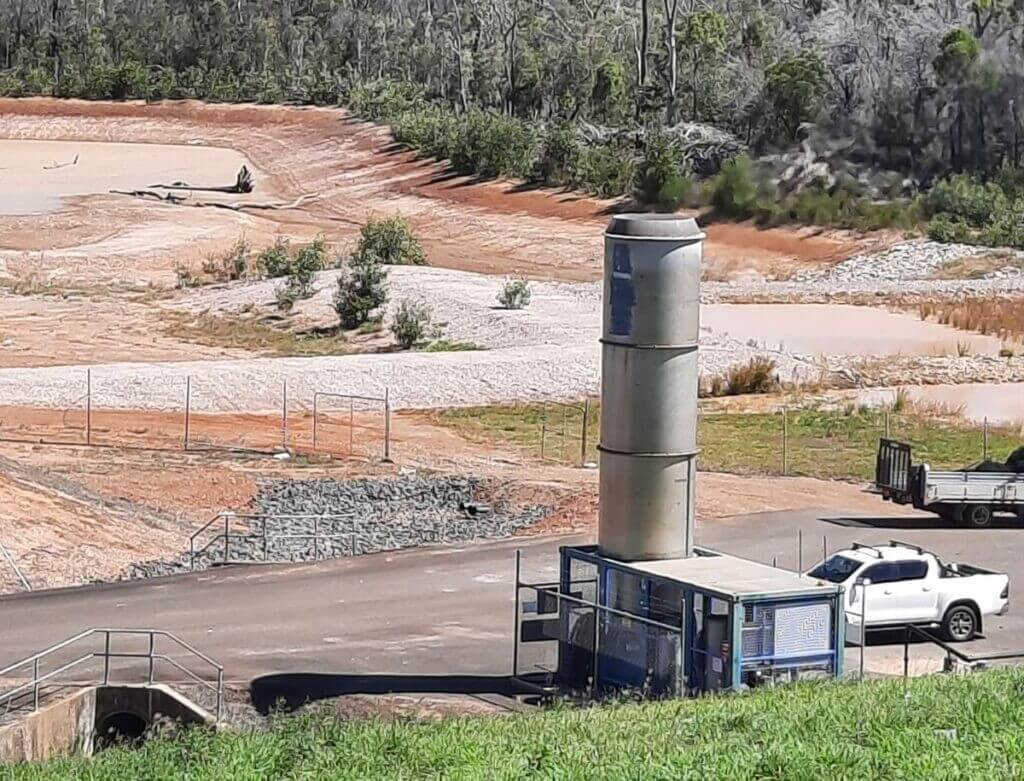
Construction Claims Article Series
This series has covered a variety of construction claim topics, including change and variation claims, delay, disruption and prolongation claims, price acceleration claims and different site condition claims. This article on progress claims explores the nature of progress claims and the legal framework that supports contracted parties’ ability to seek payment of progress claims through an abbreviated adjudication process rather than long-form Court litigation. This article will be followed by an article on damages claims that will mark the end of our Construction Contract Claims Article Series.
Introduction
Progress claims (also known as payment claims, particularly in the context of the legislation discussed below) are essential to the continuation of cashflow in the construction industry. They are the basis by which contractors and subcontractors seek, and receive, payment for the work completed during a project. Most of the other claims discussed in this article series are aimed at defining the parties’ entitlements to payment – which is then claimed for in a progress claim. For example, when a contractor makes a variation claim and the principal approves that variation claim, that affects the amount which the contractor is entitled to be paid by the principal – but that payment will only be made once the contractor claims for that amount in a progress claim. In that manner, progress claims act as the backbone of the project life cycle.
The contract and the Building Industry Fairness (Security of Payment) Act 2017 (Qld) (BIF Act)
Construction contracts usually include requirements for how much the contracted party is to be paid through the course of a project, how the contracted party is to claim such payment, the details the contracted party needs to include with each of those claims, and the times when those claims can be made. Those contractual requirements affect the parties’ rights at law, so they should be complied with to the fullest extent possible. In the absence of any other relevant legislation though, if a contracted party submitted a claim in accordance with the requirements of the contract but the parties disagreed about the amount which should be paid to the contracted party, the contracted party’s only option would be to commence litigation in Court against the contracting party. That kind of litigation is often costly, and can take years.
For that reason, in Queensland the Building Industry Fairness (Security of Payment) Act 2017 (BIF Act) sets out an additional statutory entitlement for contracted parties (head contractors and subcontractors) to submit payment claims for progress payments and, if the contracting party (whether that is a principal or head contractor) disagrees with the amount the contracted party is to be paid, have an adjudicator determine what amount the contracted party is entitled to. That adjudicator’s determination can then be enforced as if it is a Court judgment, without the contracted party needing to proceed through lengthy and complex Court litigation. The BIF Act is “designed to improve cashflow for contractors”.[1] Similar (but not identical) legislation sets out similar processes in other Australian states and territories.
Importantly, while the BIF Act provides the contractor/subcontractor with the statutory ability to enforce its claim via adjudication, the requirements of that process are set out in the BIF Act with reference to the relevant contract, and with the adjudicator required to value the progress payment in accordance with the contract (to the extent the contract provides for such valuation). For that reason, parties need to understand both the BIF Act and the terms of the relevant contract.
Making payment claims under the BIF Act
The BIF Act provides a statutory right to contracted parties to make claims for payment (referred to in the BIF Act as ‘payment claims’ rather than progress claims). That right exists whether or not it is explicitly stated in the contract. Contracted parties can have an adjudicator determine the amount they are entitled to be paid in respect of payment claims submitted in accordance with the BIF Act, if the amount is disputed by the contracting party and the following requirements are met.
1. The payment claim must be submitted in respect of a ‘construction contract’ as defined in the BIF Act. Generally, this means the contract (whether it is written or oral) must be for construction work (defined in BIF Act s65), related goods and services, or work done in anticipation of construction (e.g. design consultancy services) in Queensland. The adjudication process under the BIF Act is not available for contracts for domestic building work where a resident owner is party to the contract.
2. The payment claim must be made on or after a valid reference date (note that they cannot be made in advance for an upcoming reference date). Reference dates arise either on:
If the construction contract is terminated and the contract does not provide for a reference date surviving beyond termination, then the final reference date for the contract is the date the contract is terminated.
Importantly, only one payment claim can be issued for each reference date.
3. The payment claim must meet the definition of a payment claim under section 68 of the BIF Act. This means that it must:
Our September 2024 article linked here provides more detail about what does and does not meet the requirements of a payment claim under the BIF Act.
In several other states, the relevant legislation requires that a payment claim says that it is made under that piece of legislation (this is commonly referred to as an ‘endorsement’). Queensland’s BIF Act does not include such a requirement, so the threshold for a document being a payment claim is lower in that respect. This is vital for contracted parties to be aware of lest they inadvertently submit a payment claim and ‘use up’ the reference date available to them at that time, and for contracting parties to be aware of since it affects whether or not they should issue a payment schedule in response to a payment claim.
4. The payment claim must be made before the end of the time periods stated in section 75 of the BIF Act. Those periods are:
(a) for payment claims which are not for the final payment under the contract, the later of:
(b) for claims which relate to the final payment under the contract, the later of:
Payment claims also must be accompanied by supporting statements which declare that all subcontractors have been paid, or detail any amounts which are unpaid to subcontractors, the reasons for such non-payment, and other related details. Failure to provide a supporting statement does not affect the validity of a payment claim, but can result in penalty by the QBCC.
What happens after a payment claim is issued
After receiving a payment claim made for a valid reference date, the contracting party can either:
1. pay the amount claimed by the due date; or
2. send the contracted party a payment schedule by the earlier of:
A payment schedule must:
If a payment schedule is not given in the required time, the contracting party is taken to be liable to pay the amount claimed in the payment claim on the due date for that payment, and the contracting party will not be entitled to submit an adjudication response in answer to any adjudication application made by the contracted party for that payment claim.
Contracting parties are also limited, in any adjudication response which is required, to arguing only the reasons for non-payment which were stated in their associated payment schedule.
For both of those reasons, it is vital that if a contracting party disagrees with the amount claimed by a contracted party, the contracting party issues a robust payment schedule within the time it is required to do so.
Adjudication Processes
Where a payment claim and payment schedule differ on the amount which the contracted party is to be paid, or where no payment schedule is given and/or the contracting party does not pay the amount owed to the contracted party by the due date, the contracted party can then submit an adjudication application within the particular timeframe specified in the BIF Act. The contracting party can then (if they submitted a payment schedule) respond with an adjudication response, and an adjudicator will decide what amount the contracting party needs to pay to the contracted party.
The details of those adjudication processes are not the focus of this article, but should you require any further information or assistance in relation to adjudication processes, please feel free to contact our office.
Importantly for the purposes of this article, note that the adjudicator’s job is to decide what amount the contracted party is entitled to be paid under the contract (if the contract provides for the matter). Section 71 of the BIF Act specifically states that the amount of a progress payment to which a contracted party is entitled is:
(a) if the contract provides for the matter—the amount calculated in accordance with the contract; or
(b) if the contract does not provide for the matter—the amount calculated on the basis of the value of construction work carried out, or related goods and services supplied, by the person in accordance with the contract.”
(emphasis added)
In that critical respect, again, while the BIF Act provides the legislative mechanism and process by which amounts can be claimed via adjudication by the contracted party, it is the contract itself which (if it provides for the matter) specifies how much the contracted party is entitled to be paid.
Common mistakes in payment claims
Some common issues that can arise when making payment claims include:
Common mistakes in payment schedules
Some common issues that can arise when issuing (or not issuing) payment schedules include:
Importance of documentation
The procedural errors described above are relevant and important for parties to be aware of. However, by far the biggest difficulties we see parties have in supporting their asserted positions are due to failures to keep detailed documentary evidence throughout the course of a project. For both parties, the importance of proper documentation cannot be overstated. Keep detailed records of things like:
These records are essential in supporting either a claim for payment, or the denial of such claims (often including by way of set-off, depending on the contract).
Conclusion
Progress claims are a critical part of the construction industry in Queensland, ensuring that contracted parties are paid in a timely manner for their work, which in turn means cash can continue to flow down the line to any subcontracted parties. The BIF Act provides a statutory framework to enable contracted parties to claim for payment, and for those claims to be adjudicated if necessary, in a quicker manner than long-form Court litigation. While the BIF Act sets out these claim and adjudication processes, many parts of those processes (including, vitally, the valuation of the amounts to be paid) are directly dependent on the terms of the relevant contract.
For both contracted parties and contracting parties, understanding your contract’s terms and the BIF Act, and maintaining robust and accurate documentation are essential for maintaining cash flow and minimising the risk and effect of disputes. By the parties engaging with these processes effectively, construction projects can proceed smoothly, ensuring that payments are made fairly and promptly, which ultimately benefits all parties involved.
While every care has been taken in the preparation of this article, it is not intended as a full and complete description of every relevant legal requirement under the BIF Act, or as advice which applies to every situation. If you need further information about any of the matters discussed in this article, please seek legal advice.
Please don’t hesitate to contact us if you have any queries about progress claims, payment claims under the BIF Act, or construction contracts generally.
[1] Taringa Property Group Pty Ltd v Kenik Pty Ltd [2024] QSC 327, [17].
[2] This is one key manner in which parties need to have regard to both the wording of the BIF Act and the specific terms of the contract.

Director
Muscat Tanzer

Senior Associate
Muscat Tanzer

Law Clerk
Muscat Tanzer

This article forms part of our Construction Claims Article Series, which to date has explored change and variation claims, price acceleration claims, and delay, disruption and prolongation claims. This week, in collaboration with Anvelo, we examine different site conditions claims, with a focus on latent conditions, being unexpected or concealed risks that, if not properly addressed in the construction contract, can derail a construction project. We consider the associated risks, risk allocation strategies, and key contractual mechanisms for managing claims related to different site conditions. Next week’s article will explore progress claims, with the final instalment of the series covering damages claims.
What are latent conditions?
In the construction industry, it is not uncommon for projects to encounter obstacles that delay progress, increase costs, and even lead to disputes. One such obstacle occurs when ‘different site conditions’ or ‘latent conditions’ are identified during construction. These conditions are typically defined as unforeseen site conditions that could not be discovered during standard site inspections, by obtaining necessary professional and technical advice, or by undertaking a careful analysis of the available site plans and project documentation. ‘Different site conditions’ or ‘latent conditions’ differ from the site conditions which could reasonably have been anticipated during the contract negotiation phase, and their discovery during construction can pose significant risks to the construction program, cost, and the project as a whole.
Common examples of latent conditions include:
Who bears the risk?
One of the most frequently contested positions in contract negotiations involving latent conditions is the allocation of cost and delay risk – specifically:
Traditionally, the risks associated with latent conditions were borne by the principal, with the rationale being that the principal had a greater knowledge of the site and was better placed to identify and manage potential risks. However, it is becoming increasingly common for construction contracts to shift this risk to the contractor, reflecting the greater reliance placed on the contractor’s technical expertise. In saying that, commercial considerations may warrant the principal retaining some risk, including:
Ultimately, the allocation of cost and delay risk is a commercial decision to be negotiated between the parties and drafted into the construction contract. Regardless of the agreed position, it is advisable to:
Why are latent conditions clauses important?
Given the potential impact of latent conditions on project timelines and cost, it is critical that construction contracts include well-drafted latent conditions clauses. These clauses must set out the respective rights and obligations of the principal and the contractor in the event that latent conditions are encountered, and include an appropriate definition of ‘latent conditions’. Principals must ensure the latent conditions clause is carefully drafted to protect their commercial interests, whilst contractors must fully understand the implications of different site conditions and how the contract allocates the associated time and cost risks.
When drafting or reviewing a latent conditions clause, the following elements should be considered:
1: Definition of latent condition
The first step in drafting or reviewing a latent conditions clause is to consider what constitutes a latent condition. The definition should be sufficiently broad to protect the contractor but not so broad that the principal feels unfairly burdened with the time and cost risks. To balance the interests of the parties, the definition of ‘latent conditions’ typically imports a reasonableness standard. For example, latent conditions may be defined in the contract as:
‘site conditions which differ materially from the site conditions which should reasonably have been anticipated by the Contractor at the Contract date had the Contractor:
any other conditions which the Contract specifies identifies as Latent Conditions.
2: Allocation of risk
As discussed above, the allocation of risk is a fundamental consideration when drafting a latent conditions clause. The clause should set out whether the contractor is entitled to:
If the contract defines latent conditions as unforeseeable or unanticipated, it is generally reasonable for the contractor to claim an extension of time for the additional work required to address the condition.
3: Procedure for notification and claims
Where it is agreed that the contractor will be entitled to extensions of time or reimbursement of costs associated with latent conditions, the latent conditions clause must clearly articulate the procedure for making such claims. The clause should set out a detailed, step-by-step process for:
Importantly, this mechanism must integrate seamlessly with the broader contractual framework, particularly the provisions governing variations, force majeure events, and indemnities.
4: Reliance on principal-provided data
Where the principal provides site information, such as geotechnical reports, surveys, or environmental data, it is important for the contract to address:
Balancing this issue requires careful consideration. From the principal’s perspective, disclaiming responsibility for the accuracy of site information provided may reduce their exposure to claims, but doing so can create uncertainty and drive up pricing as contractors factor that risk into their bids. Conversely, placing full reliance on the principal’s data without requiring the contractor to exercise any independent judgment may expose the principal to significant liability if the data proves to be incomplete or inaccurate.
Tips for contractors: managing latent conditions
Contractors should adopt a proactive and commercially informed approach to managing the risks associated with latent conditions:
Tips for principals: managing latent conditions
How we can help
The discovery of latent conditions is an inherent risk in construction projects – particularly in Queensland, where environmental and geological conditions vary widely. However, with proactive planning, thorough investigation, and carefully drafted contractual provisions, the parties can prevent disputes and deliver successful outcomes. At Muscat Tanzer, we support both principals and contractors in the construction industry to manage and resolve different site conditions claims. Whether you require assistance with contract drafting, claims assessment, or dispute resolution, our experienced team is here to help you navigate these complex issues with confidence.

Director
Muscat Tanzer

Associate
Muscat Tanzer

Director - Quantum Expert
Anvelo

Our construction claims article series commenced with an article on change and variation claims which was followed by price acceleration claims. This article on delay, disruption and prolongation claims is delivered in collaboration with Anvelo, and is the third article in our series of construction contract claims articles and will be followed by articles on different site conditions claims and progress claims, concluding with damages claims.
Introduction
Delays in construction can occur for a multitude of reasons, leading to negative outcomes for principals, contractors and subcontractors. For principals, delays can lead to financial burden, inconvenience, and legal costs. For contractors, delays can risk liability for liquidated damages, reputational damage, cash flow constraints, and disputes.
In construction law, time is money, and delays, either intentional or otherwise, can expose the parties to unnecessary costs. This article discusses causes for delay, disruption and prolongation claims along with consequences of delay for all parties involved, and strategies for mitigating claims of that nature.
What is a delay claim?
A delay claim often arises when a project isn’t completed within the timeframe initially agreed upon in the contract (i.e. the date for practical completion). The nature of this claim will typically involve a contractor seeking an extension of time (EOT) to the date for practical completion in accordance with terms of the contract. The circumstances in which the contractor can seek an extension of time will typically be pre-defined in the contract as ‘qualifying causes of delay’. Where delays caused to the project are compensable causes of delay, the contractor may also claim delay costs. There are instances where qualifying causes of delay may not be compensable, as discussed later in this article.
Causes of delay
Common causes of delay on a construction project include:
Compensable causes of delay will typically include any act, default or omission of the principal or it’s consultants, agents or other contractors.
What is a prolongation claim?
A contractor may have a right to prolongation costs in circumstances where the contractor is on site for longer than initially anticipated due to delays resulting from factors that are either caused by the principal, or risks that the principal bears under the contract. Prolongation claims often involve seeking monetary compensation for extended labour charges and other indirect costs incurred because of the prolongation. Prolongation claims can be thought of as the financial element of a delay claim where the risk of the delay event falls on the principal, although it is important to note that just because an EOT is granted, this does not mean that the contractor will be entitled to prolongation costs, unless the reason that an EOT is granted is due to a compensable cause of delay. Even in this case, the contractor will still need to prove up its actual damage incurred from the compensable cause of delay. We will discuss this more later.
Causes of prolongation
Causes of prolongation on a construction project are largely the same as the causes of delay mentioned previously, but are typically limited to delays where the risk of that delay falls onto the principal, such as:
What is a disruption claim?
A disruption claim usually arises when a contractor’s pre-defined program is disrupted but does not ultimately affect the date for practical completion. These types of claims are associated with reductions in the efficiency of the works which cause the contractor to incur more costs than originally budgeted or programmed for. Disruption claims are different to delay and prolongation claims as they are not time-related claims.
Disruption may lead to delay, and delay may lead to disruption, but both can exist without one another.
Causes of disruption
Common causes of disruption on a project in the construction industry include:
Making a claim
To maximise chances of success in making a delay, disruption or prolongation claim, it is essential prior to the initiation of the claim that you have thoroughly reviewed the relevant clauses of the contract that define qualifying causes of delay and compensable causes of delay and outline the procedures for claiming EOTs and variations.
Thorough review of contract clauses
With clauses varying from contract to contract, it is essential to understand the broader context in which these delays operate. All construction contracts should contain a commencement date, a date for practical completion, and a defects liability period. The commencement date in a construction contract is the date on which the works under the contract (WUC) are scheduled to begin. The date for practical completion will be the date scheduled for the WUC to reach practical completion, minus any minor defects that do not substantially affect the use or enjoyment of the works. This can either be stated outright or worked out by reference to the commencement date (for example: “180 Business Days after the commencement date”) or the date that the contractor was given access to the site (for example: “180 Business Days after the date that the Principal gives the contractor access to the site”.
Subject to the specific terms of the construction contract, if the contractor does not complete the WUC by the date for practical completion, liquidated damages will usually be payable, and the contractor may be liable for a rate of damages (which must be a genuine pre-estimate of the principal’s loss) for every day beyond the date for practical completion that it takes the contractor to complete the works. This will occur unless the contractor is able to obtain an EOT to the date for practical completion from the principal, which will depend on the cause and reason for the delay.
Because disruption claims are not time related, EOT and delay costs clauses are not relevant. In Australia, these types of claims will typically be priced as variations. As such, it is important that both parties are familiar with and comply with the variations clauses.
Notice
Again, subject to the specific terms of the construction contract, making a claim seeking an EOT due to factors that have impacted time and/or progress of WUC, requires written notice of the cause of delay, the estimated impact on time and, if the delay is a compensable cause of delay, cost of the delay as well as a new estimated timeframe by which the WUC will be completed. Variations for disruption claims also require notice to be given in accordance the terms of the contract.
A common cause of dispute over claims of this nature often arises from claims issued outside the timeframe specified in the contract or claims issued in conflict with requirements in the contract. Accordingly, it is essential that the parties to the contract comply with the timeframe and process for seeking EOTs, delay costs and variations set out in the contract.
Evidence
To substantiate a delay, disruption or prolongation claim it is essential that the contractor is able to provide clear and contemporaneous evidence that supports the reason for making a claim.
Examples of evidence needed to substantiate a claim may include:
Robustness
A robust claim will always consider and satisfy the following three (3) elements:
Pitfalls
Despite a claimant’s best efforts in preparing a claim, some common pitfalls that lead to claims not being approved include:
Engaging with the Principal
When notice of a claim is delivered (in accordance with the contract) to the superintendent, principal or equivalent, they are required to respond to that claim promptly in accordance with the terms of the contract. If the claim is rejected, disputed or only partially approved it is essential to follow the correct procedure in accordance with the contract or where there is absence of this:
Ways to mitigate delay, disruption or prolongation claims
Mitigating delay, disruption and prolongation claims is about maintaining a positive project momentum, maintaining positive relationships and properly projecting time and costs. Through implementing simple yet efficient planning and communication techniques, the potential risk of dispute can be drastically minimised. Some delays and disruptions are unavoidable, however there are methods to minimise these issues and their impact in construction projects including:
Conclusion
Delay, disruption, and prolongation claims are common in construction projects and often result in costly disputes if not properly understood or managed. While each claim can arise from different project impacts, from restricted site access to unforeseen weather conditions and delayed approvals, the nature of these claims may overlap and require careful contractual and legal analysis.
To mitigate the risk of such claims, parties should invest in clear programming, proactive communication, thorough record-keeping of correspondence and relevant matters and any variations to the WUC as well as maintaining awareness of contract terms throughout the life of a project. A good contract with clear, specific entitlements and timeframes and early identification of potential issues can significantly reduce exposure to unwanted costs and/or further delays, disruptions and prolongations.
Please don’t hesitate to contact us if you have any queries about delay, disruption or prolongation claims, or construction contracts generally.

Associate
Muscat Tanzer

Law Clerk
Muscat Tanzer

Executive Director
Anvelo

With Queensland’s commitment to reaching net-zero by 2050, one local government has been implementing innovative carbon reduction projects through landfill gas management. For the last decade, Bundaberg Regional Council (Council) has contracted with LGI to implement innovative gas management systems within their Cedars Road and University Drive landfills, substantially decreasing their carbon footprint. With Council and LGI extending their contract for another decade, we look into how this prosperous relationship was founded and how you can do the same.
In 2013, Council entered a decade long contract for the design, installation, operation and maintenance of an extensive gas collection network and gas flare at Council’s Cedars Road and University Drive landfills.
With the previous contract coming to an end, Council commenced an extensive procurement process to procure a contract to continue and expand Council’s landfill gas management. Following an extensive tendering phase, LGI once again proved successful, entering a further decade long contract to maintain and operate their existing facilities and expand the landfill gas collection network to other landfill sites.
These multiple large-scale energy from waste projects utilise landfill gases to generate energy by recovering and beneficially using biogas from landfill sites. The process improves air quality, reduces greenhouse gas emissions and contributes to the local economy.
Success to date
Council and LGl’s relationship so far, has proven to be prosperous, with the key outcomes of the infrastructure including:
Design Build Operate Maintain Transfer (DBOMT) Model
Following Council’s procurement process, project documents for the bespoke Design, Build, Operate, Maintain and Transfer (DBOMT) contract model were prepared. The collaborative arrangement with LGI recognised and documented Council’s key requirements, detailed below:
Benefits to Council
The project has instigated the development of a delivery model that suits Council’s budget, whilst allowing leveraged investments, expanding Council’s capabilities and creating new local jobs. Other benefits include:
Environmental Resilience
Increasing Bundaberg’s environmental resilience is a key driver for this project. Preserving the Bundaberg Region’s natural environment is a priority for Council with the area just the second destination in Queensland, and the fifth in Australia, to receive ECO Destination Certification. With landfill gas emissions contributing up to 80% of local governments carbon footprint, landfill gas management has been identified as integral to this reaching this goal. Council’s success to date in emission reduction has clearly demonstrated the need for Council to continue their landfill gas management initiatives. Council has already achieved their goal of effectively increasing the Bundaberg regions environmental resilience, improving air quality, reducing greenhouse gas emissions and contributing to the local economy. By continuing this project and expanding the networks Council will continue to achieve significant results in reducing the regions carbon footprint.
Community Engagement
The transition to a more environmentally friendly economy is continually gathering pace and like many Councils, Bundaberg is always looking for ways to continually improve its environmental impact and protect the community from potentially harmful landfill gas by-products. So far, the project has had significant impact
on improving the air-quality of the region, taking potentially harmful methane gas— the natural by-product of organic materials breakdown—and converting it into carbon dioxide, which is about 28 times less harmful to the region.
Project efficiency
In addition to the project requiring zero-capital cost, Council benefits from engaging a provider to maintain and operate the facility for the future. With the provider recovering their costs through the operation and maintenance phases, the provider is incentivised to efficiently and effectively deliver the project and meet the
best performance outcomes. By incentivising the Provider, it provides a near guarantee that the Provider will operate and maintain the infrastructures optimally to ensure the production of high returns.
Zero-capital cost
Projects such as Landfill Gas Projects, often require large upfront capital costs to establish the project. Through structuring the project to have zero-capital cost or zero upfront costs, it significantly frees up funding for Council to invest in other projects which cannot be structured in this way. Additionally, through the structuring of this relationship, Council will experience partial returns from the project over its lifetime without investing significant funds into the Project.
Can DBOMT work for your Council?
Besides landfill gas management services, DBOMT and similar contract models can cater for a wide range of projects and procurement activities. The DBOMT model is direct, effective and best used where Council has specific goals, a specific scope of work, and knows exactly what they require. Best suited for arrangements between 5 and 30 years, there are numerous benefits for Council adopting to use the DBOMT project delivery model, including:
The DBOMT contract model can be applied in various ways depending on the type of project and specific project outcomes required, including:
How can we help
Muscat Tanzer can assist your local government with advice and strategic direction as to which project delivery model will best suit your local government’s project goals, including:
Please contact any of our highly experienced procurement, contracting and probity advisers if you wish to discuss this article, or for assistance with your next project.

We are pleased to present this article on acceleration costs claims in collaboration with Anvelo. This article is the second article in our series of construction claims articles. In our previous article, we discussed change and variation claims.
In construction, time is money. Delays can mean significant financial repercussions for both the principal and contractor. Within the construction industry, the term acceleration refers to the actions taken by both the principal and contractor to expedite the completion of a project or part of a project, usually in response to delays. Whilst acceleration may be deemed necessary to meet deadlines or mitigate potential penalties, directing acceleration often means the incurrence of additional costs, which typically leads to an acceleration costs claim. Understanding the nuances of acceleration and how to manage and respond to acceleration costs claims is vital for both principal and contractors.

Variations are an inevitable part of construction projects and a clear understanding of how to properly manage variation claims is critical to maintaining project delivery, protecting contractual entitlements, and minimising the risk of disputes.
This article focuses on common types of variation claims. For more detail on administering variations, including the processes under bespoke and Australian Standards contracts, powers to vary, and valuation methods, we recommend reading our earlier article from our Contract Administration Series. That article can be found via the link in the comments.

Navigating contract negotiations is a critical phase in the tendering process, particularly for local governments seeking to finalise agreements with their preferred tenderer. In the fifth and final instalment of our Probity, Procurement and Tendering Series, this article explores the key elements of effective negotiations and provides practical insights into developing a negotiation strategy, maintaining competitive tension and ensuring that the negotiation process is transparent, fair, and legally compliant.

The objectives of a local government procurement policy are generally to advance the local government’s priorities, achieve value for money, and ensure probity and accountability for outcomes.
Probity requires the purchase to be conducted ethically, honestly, and with fairness to all participants. Accountability for outcomes is about being able to explain or account for how the purchase has achieved its anticipated outcomes. Best practice in government procurement would see the development of a suitable probity plan, and for high value or complex procurement activities, the development of the plan well before the commencement of the procurement process, as well as the engagement of an external probity adviser.
This article serves as a checklist of tasks in chronological order which can form the basis for a probity plan.

The below article on Tender Process Risks and Strategies to Mitigate is the third article in our five-part Probity, Procurement and Tendering Article Series. This article will be followed by articles on Probity Plans, and lastly Contract Negotiations. This article explores strategies for minimising risks in the tender process, for both procurers and tenderers.
For procurers, we discuss key strategies for risks associated with:
For tenderers, we discuss key strategies for risks associated with:
We also discuss “Closing the deal” and the risks associated with:

This article on tendering and process contracts is the second article in our five-part Probity, Procurement and Tendering Article Series.
Requests for Tender (RTFs) have traditionally been viewed as invitations to treat, that do not create a legal or contractual obligation until a tender is accepted by the party inviting the tenders. However, a process contract can arise as are sult of a term within an RTF that constitutes an offer, which when accepted or complied with (generally by the tenderer submitting its tender) brings about a separate binding contract, or “process contract”. The implications of a process contract can be far reaching, due to the legal obligations that arise. As a result, the party inviting tenders must pay close attention to the tender process and draft the RFT to reduce the risk.
Managing process contract risk requires the procurer to:
"*" indicates required fields
Muscat Tanzer, founded by Paul Muscat and Craig Tanzer, is a specialist law firm on the Gold Coast providing expert legal services in infrastructure, construction, procurement, probity, commercial, and government law across Australia. Committed to growth and excellence, the firm continues to expand its team and fosters future legal talent through internships and graduate opportunities.